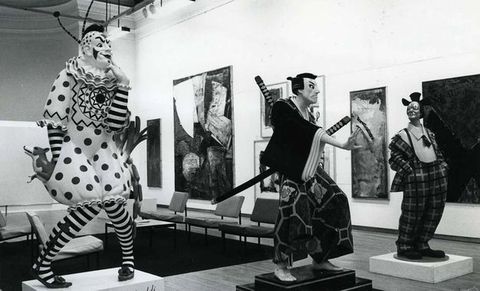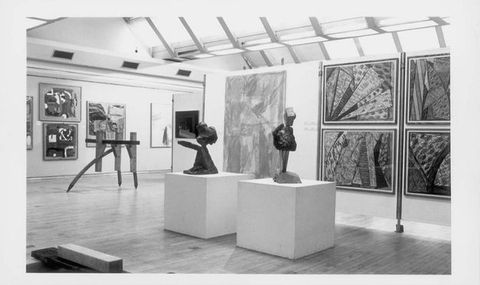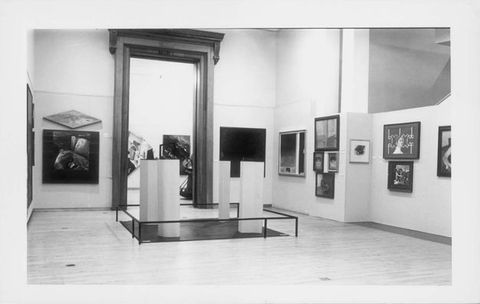British Art Show 8
British Art Show 8
By Roger Malbert
Abstract
For the first issue of British Art Studies, we have collaborated with British Art Show 8 (BAS 8) to feature new works by eight artists, who are all participating in BAS 8. In this text, Roger Malbert, Head of Hayward Touring (the organization responsible for British Art Show) reflects on the idea and history of the show. Exhibition histories have been a focus of research activity at the Paul Mellon Centre and the Yale Center for British Art recently through events such as a joint session at the Association of Art Historians conference in 2015, and a forthcoming conference in collaboration with Tate Britain on exhibitions of contemporary art in Britain between 1945 and 1960. This collaboration with British Art Show 8 extends these conversations to consider the implications of exhibiting contemporary art under the rubric of “British art”, intersecting with the topic of our Conversation Piece in this issue, “There’s no such thing as British art”.
A History of the British Art Show
The idea of an exhibition of contemporary British art, touring at five-yearly intervals to different regional cities, was first proposed to the Exhibitions Committee of the Arts Council of Great Britain (ACGB) by the legendary Director of Sheffield City Art Galleries, Frank Constantine, in the late 1970s. The Hayward Gallery, which was run by the ACGB, had initiated a series of influential–and often controversial–Annuals in 1977, focusing on aspects of contemporary art. The British Art Show was intended to offer regional museums and galleries an exhibition of equivalent scale and significance, a survey of current practice selected by guest curators and travelling each time to four different cities. Implicit in the idea from the start was a wish to redress the balance between the capital and the peripheries.
As the national funding body, the ACGB was always at pains to demonstrate its regional credentials and even-handedness. It was important that the British Art Show curators were seen to be visiting studios in every part of the country over an exhaustive two-year period of research–even though, as Joanna Drew, then Director of Art, remarked in 1984, they might ultimately come up with a list they could have arrived at sitting around a table in the Arts Council’s offices in Piccadilly in a single afternoon. From the second edition on, London and Glasgow predominated, as they do today. The exhibition has at times been bitterly criticized for its bias in favour of the metropolis and, in the eighties and nineties, a particular art college–Goldsmiths. In retrospect, however, the curators’ choices seem on the whole to have been vindicated: there are relatively few major artists working in this country who have not appeared in one or another edition of the British Art Show. The formula of two or three well-informed guest curators basing their selection on empirical research, focusing exclusively on current activity, with no chance to roam back in time to make historical connections (which many curators are keen to do, as the Tate’s comparatively short-lived Triennial illustrates), has become the show’s signature.
An interval of five years is long enough for a new generation to emerge from art colleges and for new tendencies in practice to become apparent. The ostensibly parochial notion of a show confined to British art is mitigated by a loose definition of the criteria, and the fact that over the past thirty years London, the largest city in Europe by far (population 8.63 million, compared to its nearest rival Berlin’s 3.5 million) has been a magnet for artists from across the world. This, combined with the complex legacy of Britain’s imperial history, means that simple ideas of national identity are problematized almost out of existence. What can one say then, about the characteristics of “British art” as they have been revealed by the British Art Show over the past thirty-five years?

William Packer, British Art Show 1,
ISBN: 9780728702196.
Artists in British Art Show 1 featured the
work of 112 artists working almost
exclusively in painging and sculpture. Works
by Anthony Caro, Lucian Freud, Terry Frost,
Hamish Fulton, Maggi Hambling, David
Hockney, Leon Kossoff, Richard Long, and
Bridget Riley were included. The exhibition
toured to venues in Sheffield, Newcastle and
Bristol…
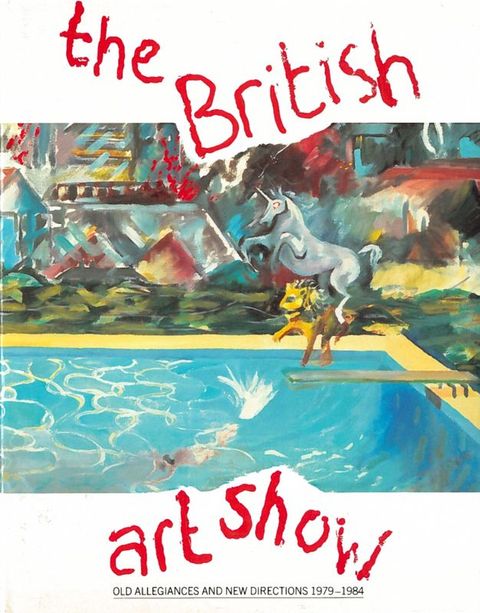
Alexander Moffat, Jon Thompson and Marjorie
Allthorpe-Guyton,
British Art Show 2, ISBN:
9780856137945.
British Art Show 2 presented a wide-ranging
selection of 84 artists working across media
including performance, installation, film
and video as well as painting and sculpture.

Caroline Collier, Andrew Nairne, and David
Ward, British Art Show 3, ISBN:
9781853320545.
They also concentrated on an emerging
generation of artists aged under 35. British
Art Show 3 included Ian Davenport, Willie
Doherty, Mona Hatoum, Gary Hume, Julian
Opie, Cornelia Parker, Fiona Rae and Rachel
Whiteread, as well as artist collectives
such as the Black Audio Film Collective,
whose members included the filmmaker John
Akomfrah. The exhibition toured to venues in
Glasgow, Leeds and London.
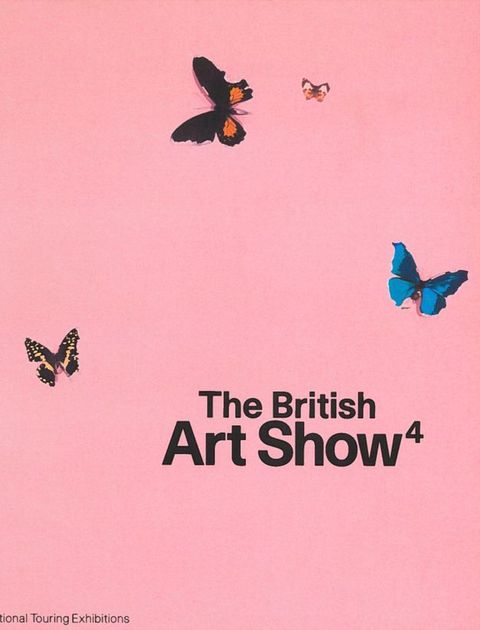
Richard Cork, Rose Finn-Kelcey and Thomas
Lawson, British Art Show 4, ISBN:
9781853321450.
Artists in British Art Show 4 included
Tacita Dean, Anya Gallaccio, Douglas Gordan,
Damien Hirst, Steve McQueen, Chris Ofili,
Sam Taylor-Wood, Mark Wallinger, Gillian
Wearing and Jane and Louise Wilson. The
exhibition toured to venues in Manchester,
Edinburgh and Cardiff.

Pippa Coles, Jacqui Poncelet and Matthew
Higgs, British Art Show 5, ISBN:
9781853322044.
The 54 artists in British Art Show 5
included Phyllida Barlow, Martin Creed,
Jeremy Deller, Tracey Emin, Liam Gillick,
Susan Hiller, Sarah Lucas, Grayson Perry,
David Shrigley and Wolfgang Tillmans. The
exhibition toured to venues in Edinburgh,
Southampton, Cardiff, Birmingham.
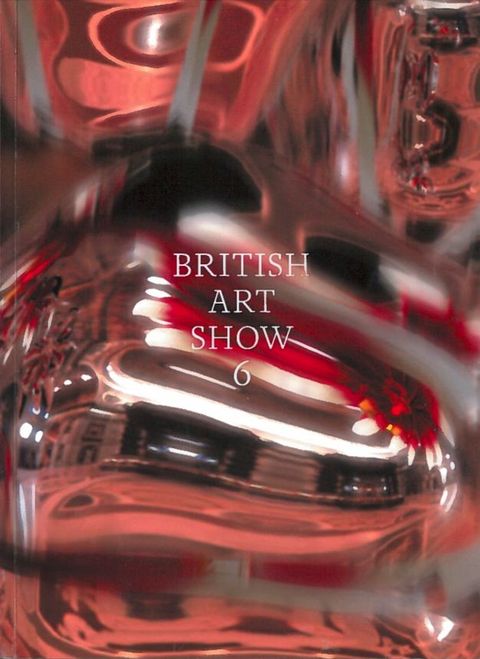
Alex Farquharson and Andrea Schlieker,
British Art Show 6, ISBN:
9781853322532.
The 50 artists who took part in British Art
Show 6 included Tomma Abts, Marcus Coates,
Phil Collins, Roger Hiorns, Mark Leckey,
Goshka Macuga, Eva Rothschild, Zineb Sedira
and Mark Titchner. The exhibition toured to
venues in Gateshead, Manchester, Nottingham
and Bristol.
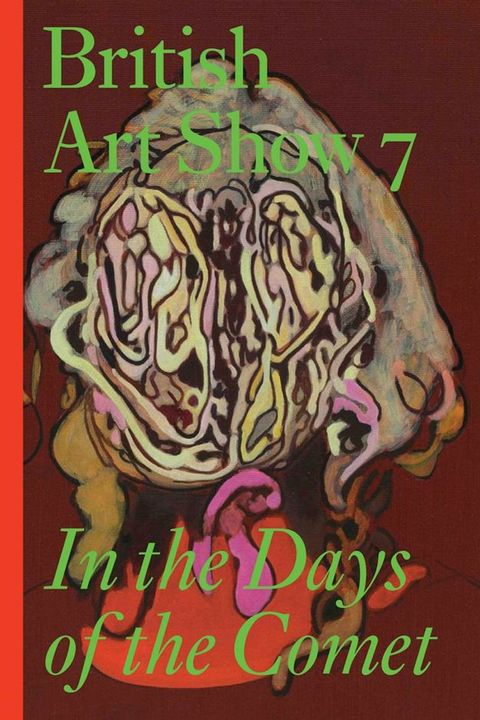
Tom Morton and Lisa Le Feuvre,
British Art Show 7: In the Days of the
Comet, ISBN: 9781853322860.
Many of the 39 artists in British Art Show 7
created new works for the exhibition. Like
British Art Show 6, the exhibition changed
and developed as it toured, with new works
being added each time. The artists in
British Art Show 7 included Karla Black,
Duncan Campbell, Spartacus Chetwynd, Matthew
Darbyshire, Sarah Lucas, Christian Marclay,
Haroon Mirza, Nathaniel Mellors, Elizabeth
Price, and Tris Vonna-Michell. The
exhibition toured to venues in Nottingham,
London, Glasgow and Plymouth.

Anna Colin and Lydia Yee,
British Art Show 8, ISBN:
9781853323416.
Artists: Åbäke, Lawrence Abu Hamdan,
Caroline Achaintre, John Akomfrah and Trevor
Mathison, Aaron Angell, Pablo Bronstein,
Adam Broomberg and Oliver Chanarin, Andrea
Büttner, Alexandre da Cunha, Nicolas
Deshayes, Benedict Drew, Simon Fujiwara,
Martino Gamper, Ryan Gander, Melanie
Gilligan, Anthea Hamilton, Will Holder, Alan
Kane, Mikhail Karikis, Linder, Rachel
Maclean, Ahmet Öğüt (with Liam Gillick,
Susan Hiller and Goshka Macuga), Yuri
Pattison, Ciara Phillips, Charlotte Prodger,
Laure Prouvost, Magali Reus, James Richards,
Eileen Simpson and Ben White, Daniel Sinsel,
Cally Spooner, Patrick Staff, Imogen
Stidworthy, Hayley Tompkins, Jessica
Warboys, Stuart Whipps, Bedwyr Williams,
Jesse Wine, Lynette Yiadom-Boakye.
Opening in Leeds in October 2015, British
Art Show 8 will tour to venues in Edinburgh,
Norwich and Southampton over the course of
15 months.
Reviewing the eight editions of the British Art Show at a glance, certain obvious features stand out. They can be seen to reflect changes in culture, patterns of production, and the growth of new technologies as well as demographic and social shifts. The first edition in 1979 seems comparatively homogenous; the names of the 112 artists included are overwhelmingly English, and only 12 were women. This was a wide-ranging, if partial, painting and sculpture survey show. It includes such major figures as Lucian Freud, Bridget Riley, Richard Long, Michael Andrews, Terry Frost, David Hockney, John Hoyland, Michael Sandle, Euan Uglow, and Sean Scully.
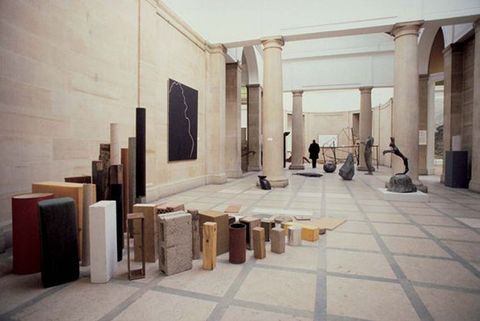
A significant shift occurred with the next British Art Show in 1984. The artist Jon Thompson, who as Head of Goldsmiths Department of Art in the 1980s revolutionized art education in this country by dissolving specialist departments, allowing students to move freely between media, and employing many experimental artists on a part-time basis, co-curated with Marjorie Allthorpe-Guyton and Scottish artist Sandy Moffat. The show bore the stamp of his radical open-minded approach with an astonishingly catholic selection encompassing every kind of practice from figurative painting to performance and video. Among the eighty-four names, hardly a single one is forgotten today. The list includes Anthony Caro, Michael Craig-Martin, Stuart Brisley, Paula Rego, Gilbert & George, Helen Chadwick, Mary Kelly, R. B. Kitaj and Howard Hodgkin. Perhaps most timely is the group of young sculptors, many of whom were associated with the Lisson Gallery: Tony Cragg, Bill Woodrow, Richard Wentworth, Richard Deacon, Antony Gormley, Anish Kapoor, Shirazeh Houshiary, and Alison Wilding. If there was a common characteristic to much of this work. It was considered at the time to be peculiarly full of “English” irony and wit.
As the British Art Show has, over time, registered developments in contemporary art, it has also reflected changes in curatorial practice, moving away from the idea of a neutral survey to a more conceptually considered and “shaped” exhibition: from an over-crowded group show towards a more calculatedly composed, minimalist presentation. The third incarnation in 1990 took a turn away from the cross-generational survey, to focus exclusively on artists under the age of thirty-five. This was a quieter exhibition, with some outstanding contributions from Mona Hatoum, Cornelia Parker, Rachel Whiteread, Gary Hume, Julian Opie, and Callum Innes. As a record of a moment, it affirmed the hegemony of Goldsmiths and consequently provoked an indignant reaction from Julian Spalding. The then Director of Glasgow Museums, where the exhibition opened, publicly denounced it as “not a British art show” (since it was unapologetically partial), and proceeded to organize his own counter-exhibition, The Great British Art Show, with a line-up of figurative painters, including Beryl Cook. Opening a new Gallery of Modern Art in Glasgow, Spalding began to acquire this type of work of popular appeal and resolutely refused to countenance collecting work by emerging Glaswegian artists such as (the now internationally renowned) Douglas Gordon. The conflict epitomized a fundamental divide in Scottish art at that time between those who could be categorized as the provincial populists, and the savvy conceptualists who were performing with confidence on the international stage, and whose work has been acquired and promoted by the Gallery of Modern Art since Spalding’s departure.
The British Art Show reached a watershed in 1995, when the exhibition broke away from the confines of a single venue to spread across numerous galleries and exhibition spaces in each city. The standards of presentation (particularly of video and film projections) reached new heights in order to satisfy the requirements of a highly professional and ambitious generation of twenty-five artists, including Steve McQueen, Sam Taylor-Wood, Tacita Dean, Damien Hirst, Chris Ofili, Douglas Gordon, Jane and Louise Wilson, and Mark Wallinger. This was the YBA moment. Plenty has been written about this generation of artists and their influence persists. They have international reputations, are represented by high-powered galleries, collected by museums across the world, and several now live abroad.
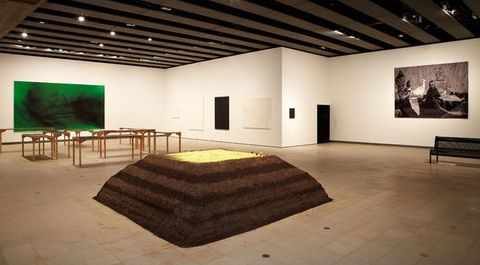
Subsequent iterations of the British Art Show have expanded to include many more artists (54 for BAS 5 in 2000 and 50 in BAS 6 in 2005, 22 of whom were women), with a good proportion of each continuing with successful careers. Phyllida Barlow, Martin Creed, Liam Gillick, Michael Landy, Sarah Lucas, Mike Nelson, Grayson Perry, David Shrigley, Wolfgang Tillmans were all in BAS 5; Tomma Abts, Zarina Bhimji, Marcus Coates, Roger Hiorns, Mark Leckey, Goshka Macuga, Zineb Sedira, and Mark Titchner were all in BAS 6–whose co-curator, Alex Farquharson, incidentally, later became the Director of Nottingham Contemporary and has recently been appointed Director of Tate Britain. The challenge he faces there is relevant to the question under consideration here: what, if anything, defines British art? The wise response would probably follow Wittgenstein’s dictum, that the meaning of a term lies in its use, rather than in some essential definition. All of the many thousands of artists living in London, Glasgow, and–increasingly as the capital prices the property-less out of the picture–across the country, would qualify for inclusion, whatever their country of origin.
British Art Show 8
British Art Show 8 is a touring exhibition and it will travel to four UK cities – Leeds, Edinburgh, Norwich and Southampton – between October 2015 to January 2017. The curators of BAS8, Anna Colin and Lydia Yee, have selected the work of forty-two artists who have made a significant contribution to contemporary art in the UK over the past five years. The result is a wide-ranging exhibition that encompasses performance, film, sculpture, installation, and painting and design. Twenty-six of the 42 artists have produced new works for the exhibition, making this the most ambitious British Art Show to date.
A central concern of British Art Show 8 is the changing role and status of the physical object in an increasingly digital age. While some artists engage with this question through traditional craft-based techniques, others experiment with modes of industrial production. As the curators comment, “We were particularly interested in the rereading of objects by artists and other contemporary thinkers as active agents, generative entities, mutating forms and networked realities.”1
1Artists: Åbäke, Lawrence Abu Hamdan, Caroline Achaintre, John Akomfrah and Trevor Mathison, Aaron Angell, Pablo Bronstein, Adam Broomberg and Oliver Chanarin, Andrea Büttner, Alexandre da Cunha, Nicolas Deshayes, Benedict Drew, Simon Fujiwara, Martino Gamper, Ryan Gander, Melanie Gilligan, Anthea Hamilton, Will Holder, Alan Kane, Mikhail Karikis, Linder, Rachel Maclean, Ahmet Öğüt (with Liam Gillick, Susan Hiller and Goshka Macuga), Yuri Pattison, Ciara Phillips, Charlotte Prodger, Laure Prouvost, Magali Reus, James Richards, Eileen Simpson and Ben White, Daniel Sinsel, Cally Spooner, Patrick Staff, Imogen Stidworthy, Hayley Tompkins, Jessica Warboys, Stuart Whipps, Bedwyr Williams, Jesse Wine, Lynette Yiadom-Boakye.
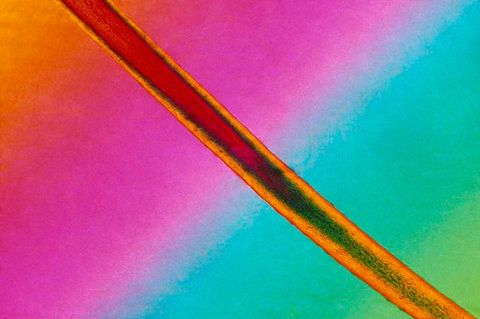
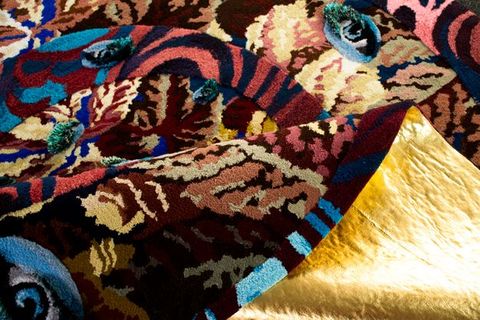

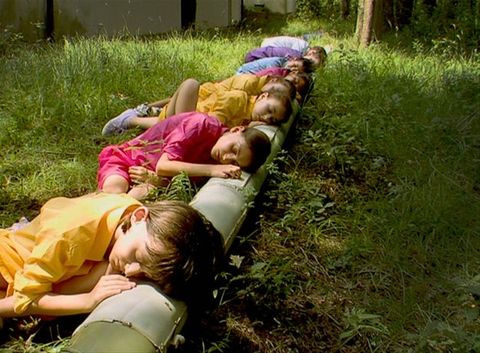
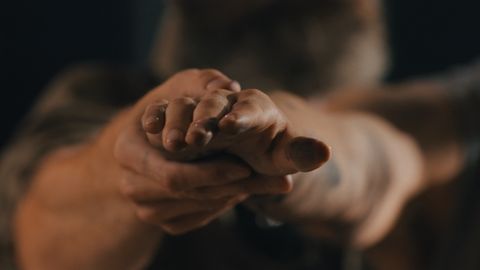
About the author
-
Roger Malbert is Head of Hayward Touring at the Southbank Centre. He studied philosophy, then illustration at the School of Art in Cambridge. He had previously worked Kettle’s Yard, Cambridge, as a sessional assistant, then full-time Assistant Curator to Paul Clough.
Footnotes
-
1
Anna Colin and Lydia Lee, “About the exhibition”, http://britishartshow8.com/page/about-exhibition-1599 ↩︎
Imprint
| Author | |
|---|---|
| Date | 16 November 2015 |
| Category | Artist Collaboration |
| Review status | Peer Reviewed (Editorial Group) |
| License | Creative Commons Attribution-NonCommercial 4.0 International (CC BY-NC 4.0) |
| Downloads | PDF format |
| Article DOI | https://doi.org/10.17658/issn.2058-5462/issue-01/rmalbert |
| Cite as | Malbert, Roger. “British Art Show 8.” In British Art Studies. London and New Haven: Paul Mellon Centre for Studies in British Art and Yale Center for British Art, 2015. https://doi.org/10.17658/issn.2058-5462/issue-01/rmalbert. |
